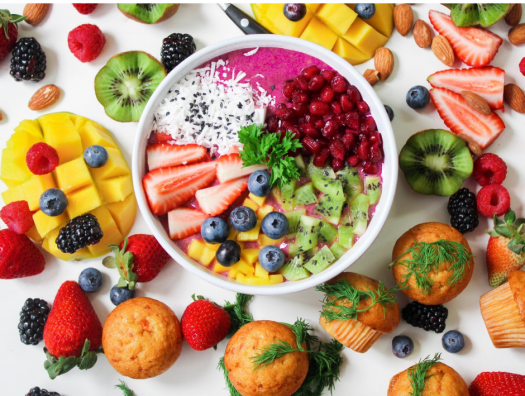By: Annabelle Shaffer, BS, Master’s candidate in the Division of Nutritional Sciences at University of Illinois Urbana-Champaign
As with friendships and romantic relationships, a healthy relationship with food requires thought and effort. What is a healthy relationship with food, you ask? Rather than worrying about your potato’s happiness or your cookie’s frustration, a healthy relationship with food is paying attention to your hunger cues, understanding that eating can be influenced by several factors, and treating food as fuel rather the “good” or “bad”.1, 5 Working to understand and improve your relationship with food can be beneficial to everyone. Below are key principles to be mindful of when making food choices.
Listen to your natural cues.
From infancy, we have the innate ability to sense our hunger and fullness.2,3 It’ is important to listen to these cues and eat accordingly. Hunger can sound like a lion is growling in your stomach and cause distraction and irritability. If you have eaten sufficient food, but not overeaten, fullness will be a comfortable feeling. Overeating can lead to nausea and abdominal pains. If we gauge hunger on a scale of 1 (feeling starved and without energy) to 10 (feeling extremely full and uncomfortable), we want to eat when we are at 3 or 4 and stop eating when we reach a 6 or 7.2
Understand the connections between eating and situational aspects.
When a stressful situation hits us, we often turn to food for comfort. Foods, especially our favorite treats, can offer short-term comfort, but will never fix an issue.3, 4 Rather than reaching for food, we want to address the situation head-on. Ask yourself: What emotions am I feeling right now? Can I address those emotions in a non-food way? For example, calling a friend or going for a brisk walk may provide you with some relief.
Food is FUEL.
Certain foods have more nutritional benefits than others, but all food is fuel. Our body relies on carbohydrates (bread, sugar, grains), proteins (dairy, beans, meats), and fats (avocado, oil, butter) to function. All foods consist of carbohydrates, proteins, and/or fats, thus all food can be used as fuel. When we label a more nutritious option as “good” and a less nutritious option as “bad”, we add unneeded rigidity and stress to our eating.4 Rather than labels, focus on creating a diet full of foods you enjoy and provide necessary nutrients, without excluding any foods.
References
- How to Have a Healthy Relationship with Food. (2019). Retrieved 20 August 2019, from https://www.nationaleatingdisorders.org/blog/how-have-healthy-relationship-food
- The Hunger-Satiety Scale. (2019). Retrieved 20 August 2019, from https://uhs.berkeley.edu/sites/default/files/wellness-hungersatietyscale.pdf
- 10 Principles of Intuitive Eating | Intuitive Eating. (2019). Retrieved 20 August 2019, from https://www.intuitiveeating.org/10-principles-of-intuitive-eating/
- What Does Intuitive Eating Mean?. (2019). Retrieved 20 August 2019, from https://www.nationaleatingdisorders.org/blog/what-does-intuitive-eating-mean
- Jordan, C., Wang, W., Donatoni, L., & Meier, B. (2014). Mindful eating: Trait and state mindfulness predict healthier eating behavior. Personality And Individual Differences, 68, 107-111. doi: 10.1016/j.paid.2014.04.013
Photo by: Canva













